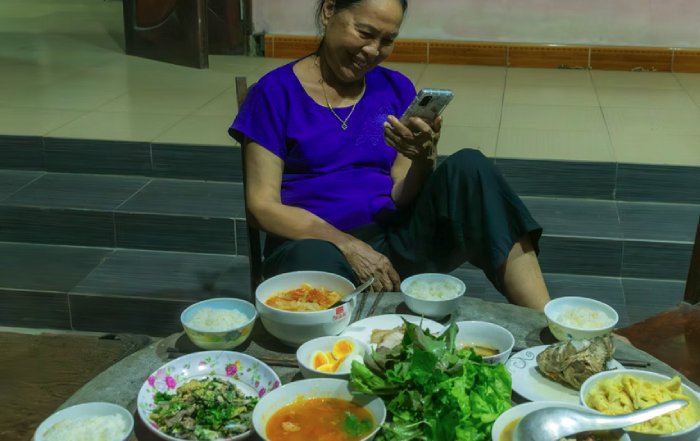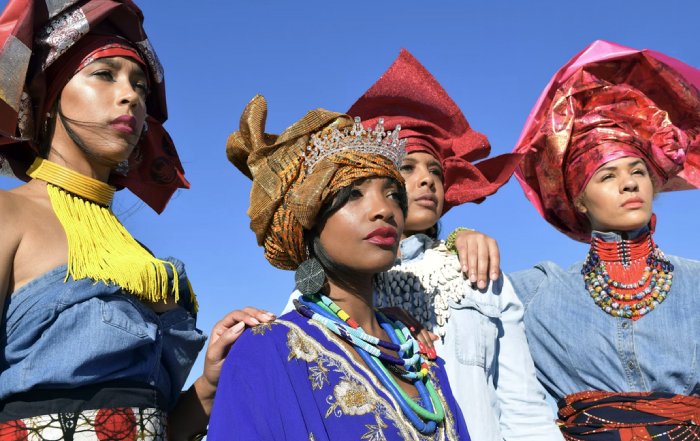Health Habits That Support Busy Modern Lives
In 2025, the pace of modern life has accelerated to a point where the boundaries between work, personal life, and digital engagement are increasingly blurred, and for many women across the world this has created a daily reality defined by constant connectivity, high expectations, and competing priorities. As careers become more demanding, families more complex, and global challenges more visible, the question is no longer whether health matters, but how sustainable health habits can be integrated into a schedule that rarely pauses. For the global audience of HerStage, which spans professionals, entrepreneurs, caregivers, students, and leaders in regions from the United States and United Kingdom to Germany, Canada, Australia, Singapore, and beyond, the challenge is to design a life where wellbeing is not an afterthought but a strategic foundation for long-term success and fulfillment.
This article explores how women and allies can cultivate realistic, evidence-informed health habits that align with the realities of busy modern lives, recognizing that health today is not only about physical fitness or nutrition but also about mental resilience, emotional balance, social connection, and a sense of purpose. It draws from current research, global best practices, and the lived experiences of ambitious women, while reflecting the perspective and mission of HerStage as a platform that champions women's voices in business, leadership, career, and lifestyle.
Redefining Health for a Hyper-Connected World
The traditional notion of health as something managed only in a doctor's office or gym has given way to a broader, more integrated understanding, where everyday decisions around sleep, food, movement, and digital use accumulate into long-term outcomes. Organizations such as the World Health Organization emphasize that health is a complete state of physical, mental, and social wellbeing, not merely the absence of disease, and this definition has become particularly relevant in a world where burnout, anxiety, and chronic illness are rising even among high-performing professionals. Readers who follow health-focused features on HerStage will recognize that the conversation now includes emotional safety at work, psychological safety at home, and the ability to navigate global uncertainty without sacrificing personal stability.
For women in demanding careers, especially in hubs such as New York, London, Berlin, Toronto, Sydney, and Singapore, health habits must be redefined as strategic assets that support performance, creativity, and decision-making. Research from institutions like Harvard T.H. Chan School of Public Health shows that lifestyle factors including nutrition, physical activity, sleep, and stress management significantly influence long-term risk for chronic diseases and cognitive decline, which means that daily routines are not trivial but central to career longevity. Learn more about how lifestyle shapes long-term health outcomes through leading public health resources such as Harvard's public health insights.
This reframing is particularly important for women who often juggle multiple roles, including leadership in organizations, entrepreneurship, caregiving, and community engagement. By understanding health as a continuum influenced by small, repeated behaviors rather than dramatic interventions, it becomes easier to design habits that fit into real life rather than an idealized schedule. On HerStage, where self-improvement and mindfulness content intersect with career advice, this integrated perspective is central to how health is discussed and celebrated.
Sleep as a Non-Negotiable Performance Strategy
One of the most underestimated health habits in modern life is sleep, which is often sacrificed first when deadlines, travel, caregiving responsibilities, or social commitments expand. Yet leading sleep researchers, including experts at Johns Hopkins Medicine, consistently demonstrate that sleep is fundamental to memory, emotional regulation, immune function, and metabolic health. For busy professionals, this means that trading sleep for productivity is not a neutral decision but a direct compromise to focus, creativity, and resilience. Readers can explore more about the science of sleep and its impact on cognition and mood through trusted health resources such as Johns Hopkins Medicine's sleep health guidance.
In high-pressure work environments across North America, Europe, and Asia, there is still a cultural narrative that glorifies late nights and early mornings as evidence of dedication, particularly in fields such as finance, technology, law, and entrepreneurship. However, organizations like McKinsey & Company have highlighted that sleep-deprived leadership is associated with poorer decision-making, reduced emotional intelligence, and weaker team engagement, which ultimately undermines organizational performance. Business readers interested in how sleep intersects with leadership effectiveness can explore thought leadership on high-performing leadership practices.
For the HerStage audience, a more sustainable approach involves treating sleep as a strategic resource rather than a luxury, which may include establishing consistent sleep and wake times even across time zones, creating device-free wind-down routines, and negotiating boundaries with employers or clients where possible. While not every woman can control her schedule fully, particularly those balancing shift work or caregiving, small adjustments such as limiting caffeine late in the day, dimming lights in the evening, and using brief relaxation techniques can improve sleep quality even when total sleep time is constrained. Articles on mindfulness and stress reduction at HerStage complement this approach by offering practical practices to quiet the mind before bed.
Nutrition for Energy, Focus, and Hormonal Balance
In fast-paced cities and remote work environments alike, eating habits often default to convenience, speed, and comfort, which can lead to energy crashes, mood fluctuations, and long-term health risks. Yet modern nutrition science underscores that food is not only fuel but also information that influences hormones, inflammation, gut health, and brain function. Organizations like the Academy of Nutrition and Dietetics and National Health Service (NHS) in the United Kingdom emphasize balanced dietary patterns rich in vegetables, fruits, whole grains, lean proteins, and healthy fats as foundational to sustained energy and disease prevention. Readers can learn more about evidence-based nutrition guidelines via NHS healthy eating resources.
For women leading busy lives in regions such as Germany, France, Italy, Spain, and the Netherlands, cultural food traditions can be leveraged as strengths, especially when they emphasize fresh ingredients, moderate portions, and social connection. The Mediterranean diet, for example, has been extensively studied by institutions such as Mayo Clinic for its positive impact on heart health and cognitive function, offering a model for busy professionals who want both pleasure and prevention in their meals. Those interested can further explore how Mediterranean-style eating supports long-term health.
For HerStage readers, the practical challenge is often how to translate nutritional wisdom into everyday routines that accommodate early meetings, late calls across time zones, childcare, and travel. Simple strategies include planning a small set of reliable, nutrient-dense meals and snacks, keeping healthy options visible and accessible at home or in the office, and using meal delivery or batch cooking to reduce decision fatigue. Exploring food and lifestyle content on HerStage can provide inspiration that respects cultural diversity while promoting health. Moreover, paying attention to how different foods affect focus, mood, and digestion allows women to tailor their habits to their individual needs, aligning nutrition with both performance and comfort.
Movement as a Daily Essential Rather Than an Occasional Event
Physical activity is often framed as a structured workout at a gym or studio, which can feel unrealistic for individuals with demanding schedules in industries from technology and healthcare to education and logistics. However, the World Health Organization and leading health systems emphasize that cumulative movement throughout the day, including walking, climbing stairs, stretching, and short bursts of activity, can significantly improve cardiovascular health, metabolic function, and mental wellbeing. For those seeking global guidelines, WHO's recommendations on physical activity provide a clear, adaptable framework.
In many major cities, from Tokyo and Seoul to Stockholm, Copenhagen, and Amsterdam, urban design encourages walking and cycling, which can be integrated into daily routines without requiring additional time slots. For remote workers in Canada, Australia, New Zealand, and South Africa, nature access can be a powerful motivator for movement, supporting both physical and mental health. Employers are increasingly recognizing the benefits of active breaks, standing meetings, and wellness programs, with organizations like World Economic Forum highlighting the link between physical activity and workplace productivity. To understand this intersection further, readers can explore insights on health and productivity in the workplace.
Within HerStage, where lifestyle and self-improvement content often intersect with career and leadership, movement is framed not as a punishment for the body but as a resource for mental clarity, confidence, and emotional balance. Even ten-minute intervals of movement between meetings, stretching while on calls, or walking during one-on-one conversations can compound into significant benefits over weeks and months. For many women, reframing exercise from "all or nothing" to "something is always better than nothing" is a pivotal mindset shift that makes consistency possible.
Mental Health, Stress, and Emotional Resilience
The mental health dimension of modern life has become impossible to ignore, particularly after years of global uncertainty, economic shifts, and the ongoing evolution of work models. Organizations such as the American Psychological Association and National Institute of Mental Health have documented rising levels of stress, anxiety, and depression, especially among younger professionals and women who face both career and caregiving pressures. For those seeking accessible, science-based information, NIMH's mental health resources provide a useful starting point.
In high-performance environments across Asia, Europe, North America, and Africa, there is a growing recognition that mental health is a strategic priority rather than a private concern, with companies investing in employee assistance programs, coaching, and mental health training for managers. Platforms like Mind in the United Kingdom and Beyond Blue in Australia have played critical roles in normalizing conversations about mental health, encouraging individuals to seek support early rather than waiting for crises. Learn more about practical mental health support and workplace wellbeing through organizations such as Mind's guidance on mental health at work.
For the HerStage community, especially those reading world and education sections, emotional resilience is increasingly seen as a core leadership competency. This includes the ability to set boundaries, say no when necessary, delegate effectively, and cultivate supportive relationships both inside and outside of work. Mindfulness practices, journaling, therapy, and peer support groups can all play roles in helping women navigate stress, process emotions, and maintain a sense of agency amid complexity. By featuring stories of women who have faced burnout and recovered, HerStage reinforces the message that seeking help is a sign of strength, not weakness.
Digital Boundaries in an Always-On Culture
As smartphones, collaboration tools, and social platforms have become embedded in daily life, the line between productive connectivity and harmful overexposure has grown thin. Research from organizations like Pew Research Center highlights how constant digital engagement affects attention, sleep, and social dynamics, with particular implications for younger professionals and those in remote or hybrid roles. Readers can explore more about digital habits and their impact on wellbeing through Pew's research on technology and society.
For women balancing professional demands with family or personal responsibilities, digital tools can be both a lifeline and a source of constant pressure, as messages, notifications, and content streams rarely pause. In regions such as France, Spain, and Italy, emerging legal and cultural norms around the "right to disconnect" are reshaping expectations for after-hours communication, while in Asia-Pacific and North America companies are experimenting with meeting-free days and asynchronous communication to reduce overload. Organizations such as OECD have examined how digitalization affects work-life balance, offering policy and organizational perspectives that are highly relevant to global readers; those interested can learn more via OECD's work-life balance insights.
On HerStage, where career and leadership stories often highlight the realities of hybrid and remote work, digital boundaries are increasingly framed as a critical health habit. This may involve setting specific times for checking email and messaging apps, turning off non-essential notifications, creating device-free zones at home, and being explicit with colleagues about availability. Such practices are not about resisting technology but about using it intentionally, so that it supports rather than dominates life. Over time, these boundaries protect attention, reduce anxiety, and create space for rest, relationships, and creativity.
Beauty, Confidence, and the Health of Self-Perception
Health habits in modern life also intersect with how women relate to their own bodies and identities, particularly in a global culture saturated with images, filters, and performance metrics. While physical appearance is often framed as separate from health, the way individuals perceive themselves has profound implications for mental wellbeing, social participation, and career confidence. Organizations such as Dove and its Self-Esteem Project, in collaboration with academic institutions, have highlighted the impact of unrealistic beauty standards on self-worth, especially among young women and girls. Those interested in the psychological impact of media on body image can explore self-esteem and body confidence initiatives.
For the HerStage audience, which regularly engages with beauty, fashion, and glamour content, there is an opportunity to redefine beauty as an expression of health, personality, and cultural identity rather than conformity to narrow ideals. This includes celebrating diverse body types, skin tones, ages, and styles, and encouraging routines that prioritize skin health, comfort, and authenticity. Dermatology organizations like the American Academy of Dermatology offer guidance on skincare practices that protect long-term health, including sun protection and early detection of skin conditions; readers can learn more via AAD's skin health information.
By aligning beauty habits with health priorities-such as choosing products that support skin barrier function, practicing sun safety, and avoiding extreme dieting-women can cultivate a relationship with appearance that enhances rather than undermines wellbeing. In professional settings across Europe, Asia, Africa, and the Americas, this alignment supports confidence, presence, and authenticity, which in turn influence leadership opportunities and career advancement. HerStage plays a role in shaping this narrative by highlighting stories and advice that center health, dignity, and self-respect.
Integrating Health into Leadership and Career Strategy
As more women step into leadership roles in corporations, startups, public institutions, and creative industries, the connection between personal health habits and leadership effectiveness has become increasingly visible. Studies from institutions like Stanford Graduate School of Business and INSEAD have explored how wellbeing practices influence decision-making, empathy, and ethical behavior, arguing that sustainable leadership requires a foundation of physical and psychological resilience. Those interested in the intersection of leadership and wellbeing can explore insights from leading business schools on sustainable leadership.
For the HerStage community, especially readers engaged with business and leadership content, this means that health habits are not merely personal choices but components of a broader leadership philosophy. Leaders who model healthy boundaries, prioritize rest, encourage flexible work, and support mental health send powerful signals to their teams, shaping organizational culture and performance. Companies across North America, Europe, Asia, and Africa are recognizing that burnout among leaders has cascading effects, and that investing in health is a strategic imperative rather than a perk.
On an individual level, women can integrate health into career strategy by explicitly considering energy management, recovery, and support systems when making decisions about roles, promotions, relocations, or entrepreneurial ventures. This might mean evaluating the health culture of potential employers, negotiating flexibility, or intentionally building networks that include mentors, coaches, and peers who value wellbeing. By treating health as a non-negotiable criterion alongside salary, title, and location, women place their long-term capacity to lead and create at the center of career planning.
A Holistic, Sustainable Path Forward
In 2025, the reality of busy modern lives is unlikely to become simpler, as technological change, global interdependence, and evolving social expectations continue to shape how people work, communicate, and care for one another. However, the growing global conversation around sustainable health habits offers a path forward that does not require abandoning ambition, caregiving, or creativity. Instead, it invites women and their allies to design lives where sleep, nutrition, movement, mental health, digital boundaries, and self-perception are integrated into daily routines in ways that are realistic, culturally sensitive, and personally meaningful.
For the global audience of HerStage, spanning continents and cultures yet united by a desire for purposeful, fulfilling lives, health habits are not simply individual choices but collective statements about what kind of world is being built for the next generation. By engaging with resources across women's stories, lifestyle, mindfulness, career, and the broader HerStage platform at herstage.com, readers can continue to refine their own approaches, learn from others, and contribute to a culture where wellbeing and ambition reinforce rather than compete with each other.
Ultimately, the most powerful health habit in a busy modern life may be the decision to treat wellbeing as a central, strategic priority rather than a peripheral concern. When women across North America, Europe, Asia, Africa, and South America make that choice-individually and collectively-they not only improve their own lives but also reshape workplaces, families, and societies in ways that honor both human potential and human limits. In that sense, every small, consistent habit becomes part of a larger story, one that HerStage is committed to telling and amplifying for years to come.










